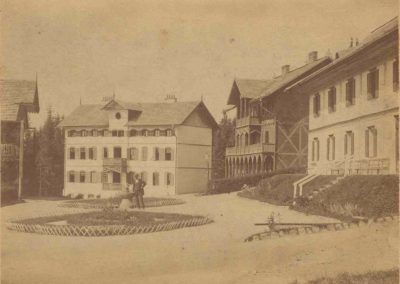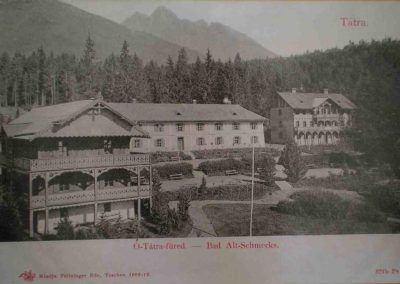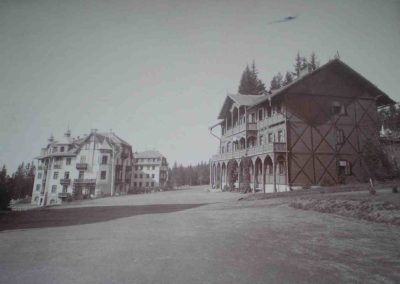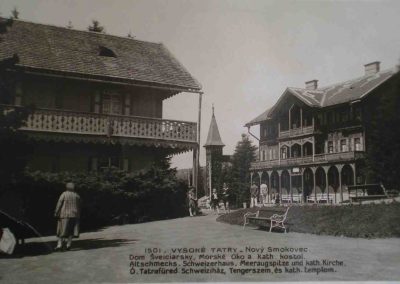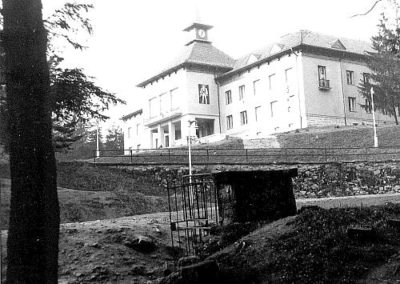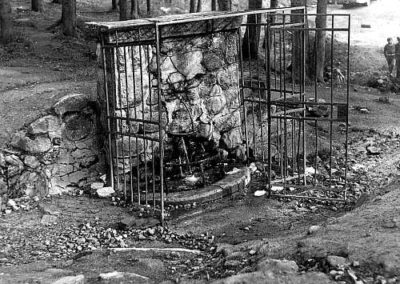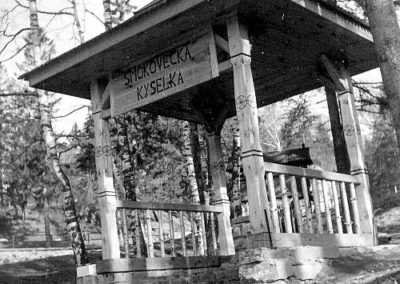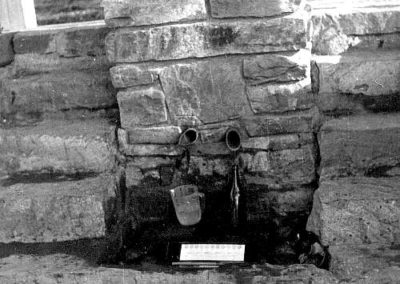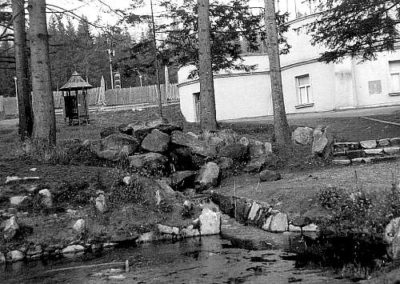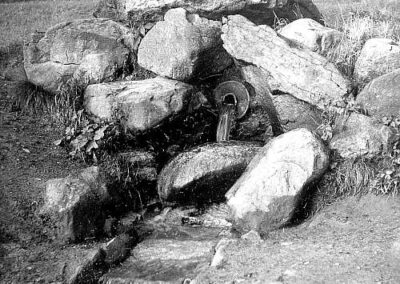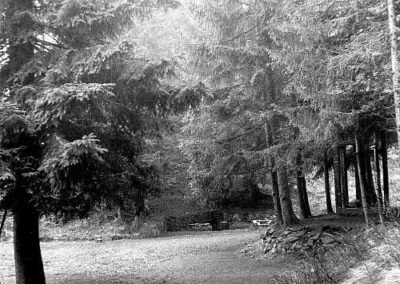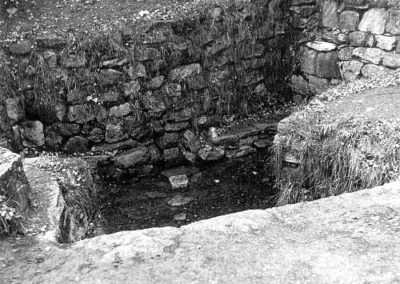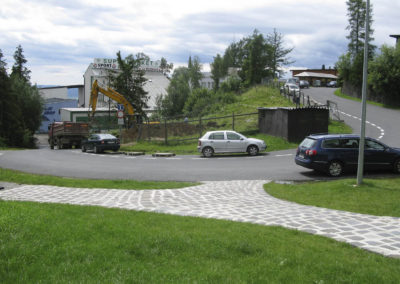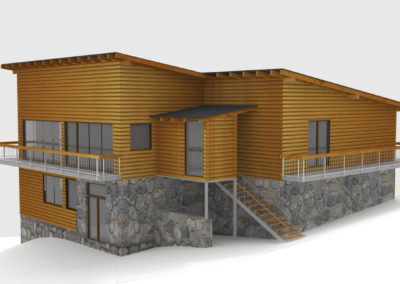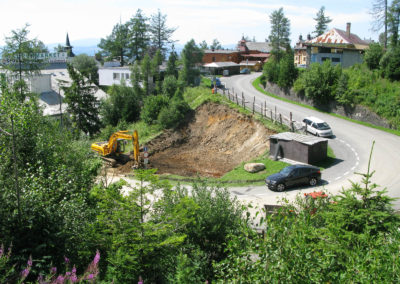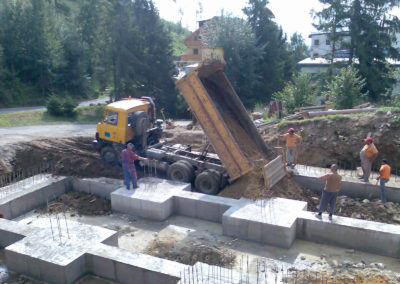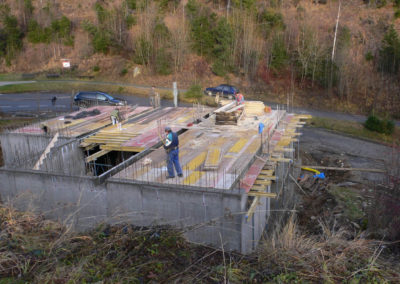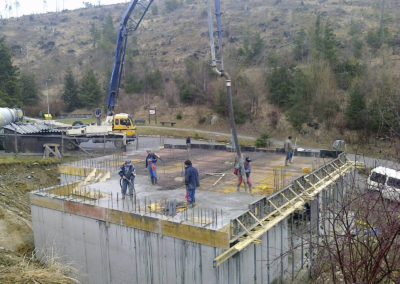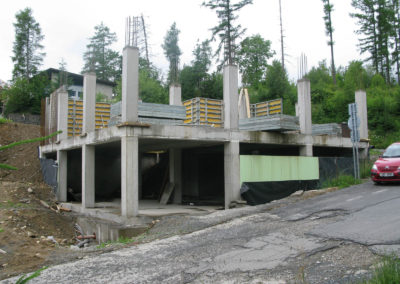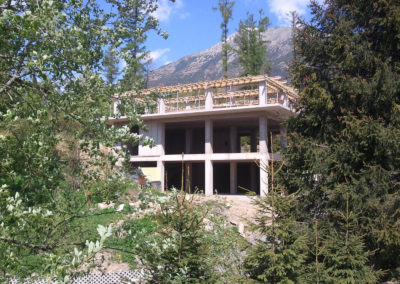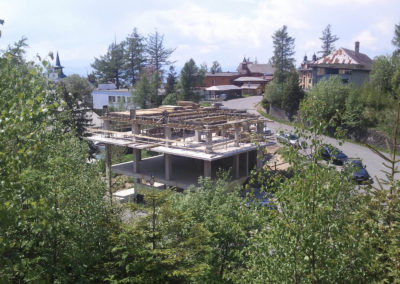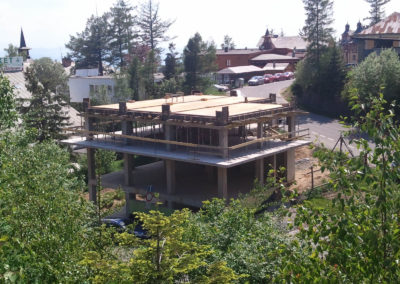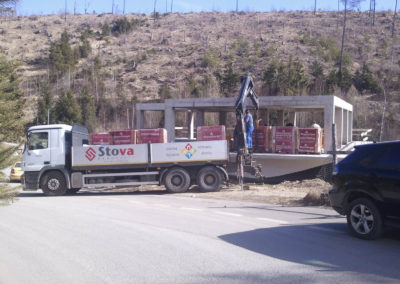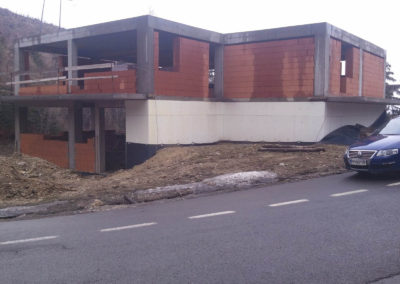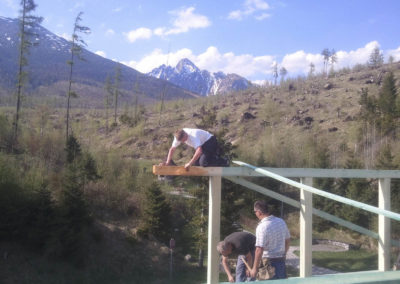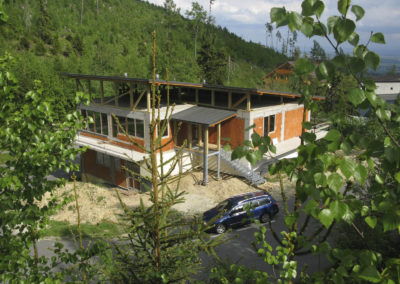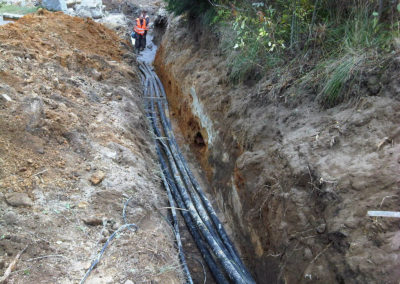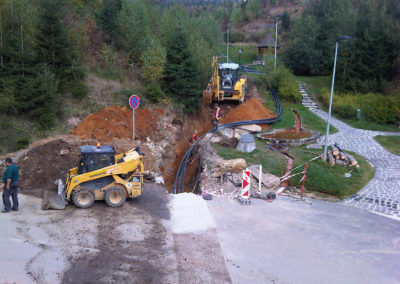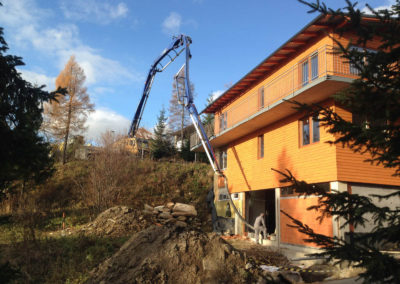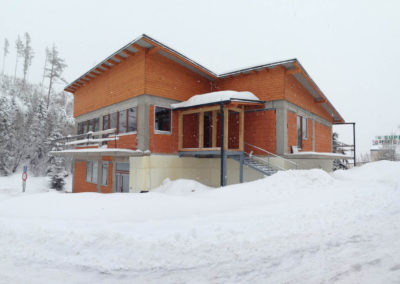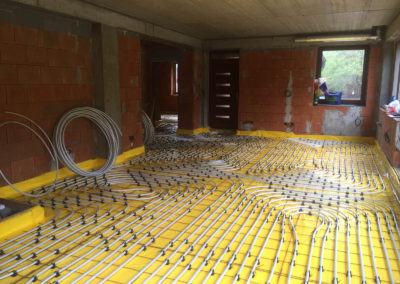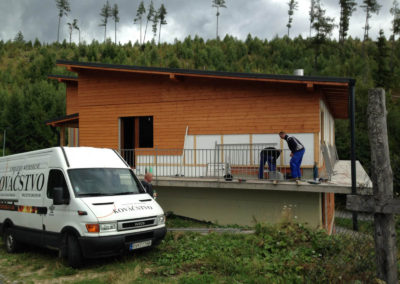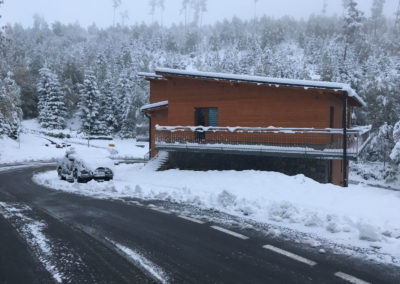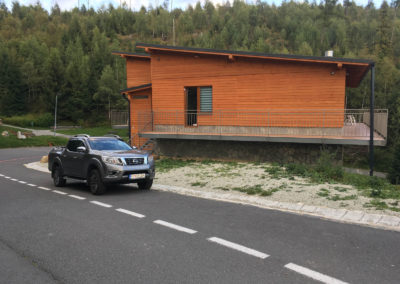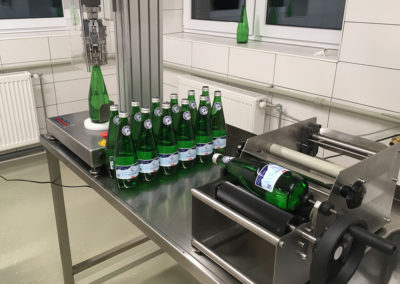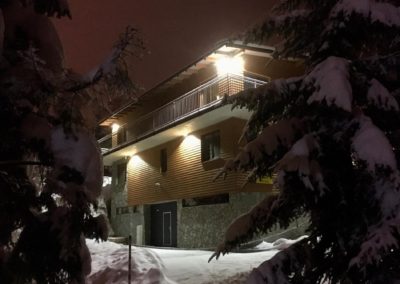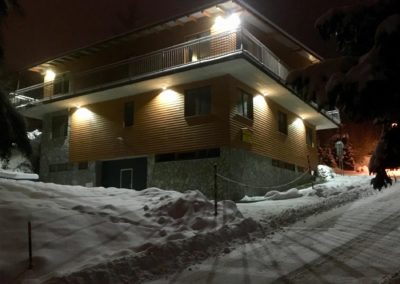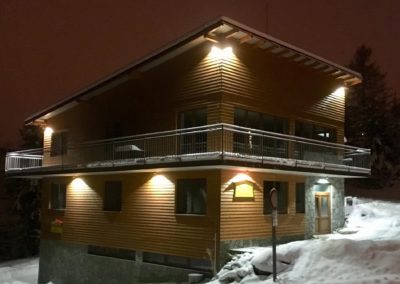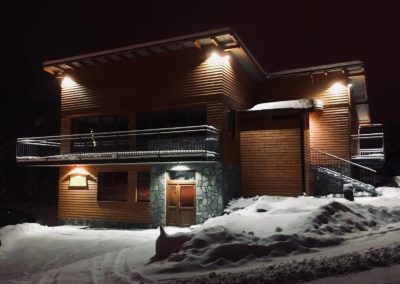TATRANSKÁ mineral water
has a rich taste and history.
“Schmeckt’s” … (from German – Do you like it?) these words of the first discoverers of the Tatra springs began to write the history of one of the most prestigious mineral waters, not only in Slovakia.
TATRANSKÁ mineral water has for centuries well springs from a natural spring under Slavkovský peak on the southern side of the High Tatras. The spring is located in rocky, clean, clear bed, at 1030 m. Thanks to the rarely balanced mineral composition, TATRANSKÁ mineral water is suitable for regular (daily) consumption. It has a neutral and refreshing taste.
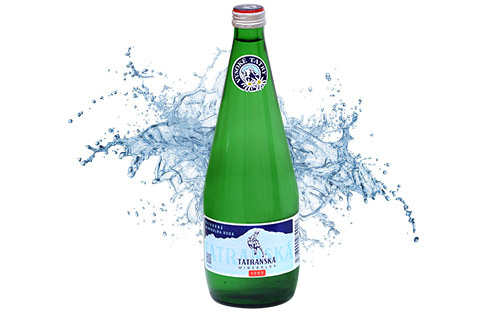
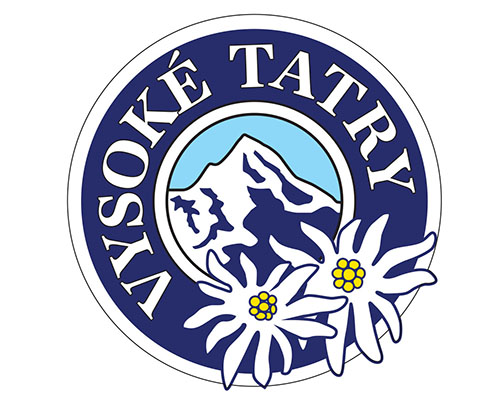
Already the royal official Juraj Wernher (1497-1567), captain of the Saris Castle, in his work on “The Wonderful Waters of Hungary”, issued in Basel in 1549, paid attention to Spiš’s mineral waters, healing and thermal springs. At the foot of the Tatras he mentioned two rare springs.
Evangelical teacher Juraj Buchholtz st. (1643-1724), in particular mentions the acidic spring – Sauer Brunn – above the village Veľký Slavkov, in the manuscript of his 1707 biography, describing the pumping of water and the stylish construction of the first wooden log cabins and spa houses around the sources. The acidic spring is also mentioned by his son Jakub Buchholtz (1696-1758), mineralologist and botanist, who led the imperial commission in 1751 when exploring Spiš’s mineral wealth. After exploring a number of mineral springs, he recommended drinking the water from Tatras to people daily, mainly for its healing and beneficial effects.
With this attribute full demijohns were regularly transported on the back of the donkeys and horses from the spring area in the Tatras, even for the personal needs of Queen Maria Theresa, to the court in Vienna (more than 400 km!). At the time when they drank it at the court, it was orange in colour, as there was no way to reduce the high iron content. However, water quality has been preserved for several weeks!
In 1754, Spiš´s county physician Ján Žigmund Kreysel (1717-1768) positively expressed himself about the springs in his official report and perhaps his knowledge and reasoning encouraged later the educated Count Štefan Csáky to build other objects close to the springs. The centre of Tatras was so naturally born around the springs.
A more detailed analysis of the water from the springs was carried out in 1772 by professor Heinrich Johann Crantz, who in addition to carbon dioxide found iron and other important minerals. A highly acclaimed expert, in his work described this water as the best he ever met, especially for its digestive and healing effects. He has already shown that this sparkling and fertile Tatra water treats nerve disorders, skin and movement disorders, and also promotes digestion.
In the second half of the 19th century, the two springs from Starý Smokovec were named Castor and Pollux, according to the twins of Greek mythology. People often customized their names and changed them. It was partly caused by the fact that the water has been used all over the Austro-Hungarian empire under different names.
Rescue of the Smokovec Springs
High Tatras on November 19, 2004, in a single afternoon, changed to be unrecognizable …
Simply put – even the Smokovec springs have almost not survived the wind calamity. The extent of the damage was huge. Damaged not only the entire area of the springs: gazebo, pavements, benches, litter baskets, ponds with a water outlet, spitting around the surrounding slopes, not to mention. What was worse, the spring from the gazebo disappeared. A portion of the mineral water spontaneously blew beneath the broken trees near the sidewalk. Waste started to pile up – especially the water bottles that people brought here in the hope of picking up their popular mineral water. The entire protection zone of the source of mineral water sources was also seriously damaged. The situation was very serious, and it was necessary to make a lot of effort to revive this ever so picturesque and historically immensely valuable piece of Smokovec and the springs (Pollux and Castor), have been a part of the beginning of the village itself.

The question then arises as to how to proceed with mineral springs? First it was necessary to remove the calamity wood in such a way as to avoid further damage to the spring area, but also to the rest of the surroundings. After removing the wood and clearing the area, it was necessary to carry out a detailed hydrogeological survey, which led to the successful revitalization of the spring several years ago by SKOV, Ltd. Finally, it was necessary to adjust the whole area – to build a new gazebo and to renovate all the facilities around the damaged gazebo.
TANAWA has enriched the immediate vicinity of the springs over the last few years and, in particular, ensured fencing around the spring area. Regularly carries out the maintenance and treatment of both springs and, above all, takes care of the purity and flawlessness of the supply pipe to the gazebo and, of course, the filler of TATRANSKÁ mineral water. Water is regularly checked (at least once a week) and laboratory tests are performed. But water has been absolutely harmless for decades, and it is recommended to consume it daily for its beneficial effects.
Construction of the filling station building
We started the project in 2008, when we bought the land near the filling station. The work lasted until 2016 and you can see it in our gallery.

